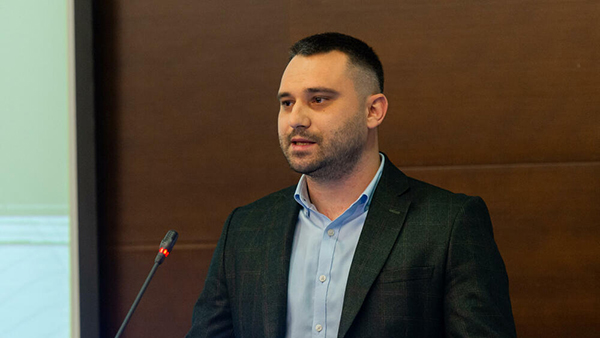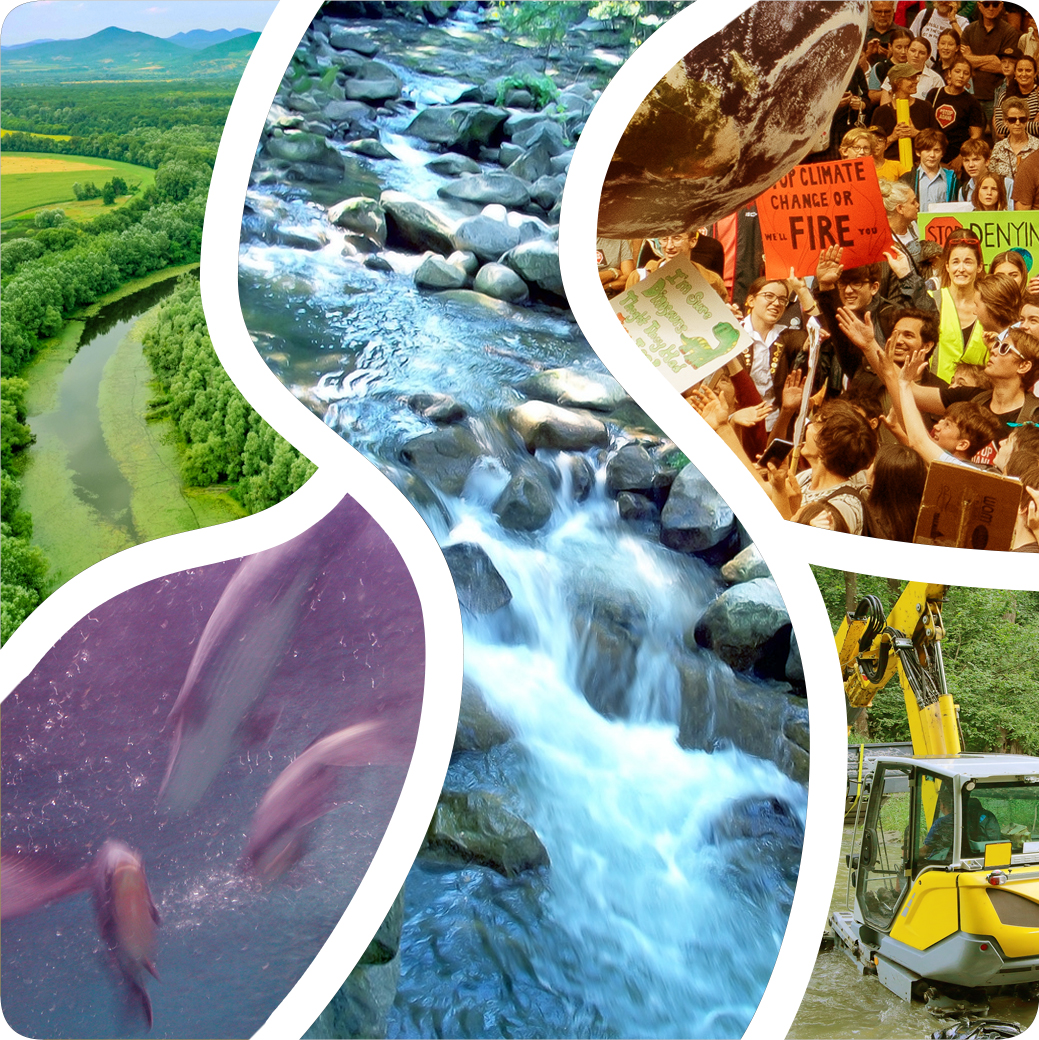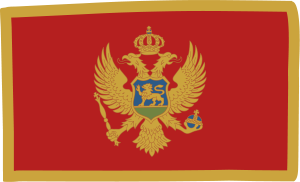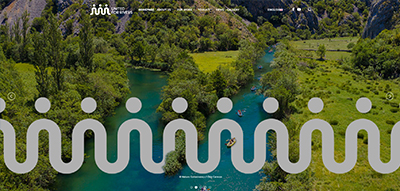Milija Čabarkapa
Executive director - Eco-team
NGOs & Civil Society

My Projects
Initiative “United for Rivers”
Barrier removal, the Vezisnica river, Pljevlja Municipality, Montenegro
Key project facts
United for rivers
One of the most important initiatives we have worked on in Montenegro is the "United for Rivers" campaign, a regional effort to protect the last free-flowing rivers of the Western Balkans. In Montenegro, this initiative focuses on safeguarding ecologically valuable rivers such as Ćehotina, Bistrica, Morača, and Mrtvica.
Key Achievements:
- Legal Protection of Bistrica River:
Through joint efforts with local and international partners, the Bistrica River was officially granted protected area status. To support its long-term preservation and effective management, the Municipality of Bijelo Polje established a new Agency for the Management of Protected Areas. This represents a crucial institutional step in ensuring the protection of the river’s exceptional biodiversity, cultural heritage, and environmental value. - Formal Protection Procedures for Ćehotina, Morača, and Mrtvica Rivers:
Following the initiative of Eco-Team and as part of the United for Rivers campaign, formal protection procedures are currently underway for the Ćehotina, Morača, and Mrtvica rivers. These processes aim to secure long-term conservation status for these vital freshwater ecosystems and are being conducted in cooperation with local institutions and relevant authorities. - Broader Goals:
- Preserve freshwater ecosystems vital to both nature and communities.
- Prevent unsustainable development, such as dam construction or pollution.
- Promote nature-based solutions and engage local communities in conservation.
- Contribute to Montenegro's environmental protection commitments under regional and international frameworks.
This work is carried out in close cooperation with Eco-Team, The Nature Conservancy, and other regional partners, demonstrating the power of cross-border collaboration in protecting the shared natural heritage of the Western Balkans.
Barrier removal, the Vezisnica river, Pljevlja Municipality, Montenegro
One of the most important standalone initiatives we have worked on in Montenegro is the restoration of the Vezišnica River, a tributary of the Ćehotina River, through the removal of river barriers.
Key Achievements:
- In October 2021, Montenegro carried out the first-ever removal of river barriers in the Western Balkans.
- Three illegal and non-functional barriers were removed from the Vezišnica River, allowing it to regain its natural, free-flowing state for the first time in decades.
- This action was implemented through a collaboration between the Municipality of Pljevlja, the Ministry of Ecology, Spatial Planning and Urbanism, WWF Adria, and local civil society organizations.
Goals and Impact:
- Restoration of river connectivity and hydrological continuity, enabling migration of aquatic species and natural sediment transport.
- Improvement of ecological status and biodiversity recovery along the river corridor.
- Pioneering river restoration in the region, setting a precedent for similar actions in the Western Balkans and aligning Montenegro with EU environmental directives and sustainable water management practices.
This initiative demonstrates a concrete step toward nature-based solutions and highlights the potential for revitalizing degraded freshwater ecosystems through practical, science-based interventions.
What impact did these projects have on biodiversity, if any?
Legal Protection of the Bistrica River has helped safeguard a range of habitats critical for aquatic and riparian species. By preventing harmful activities such as uncontrolled construction, pollution, and habitat fragmentation, the protected status helps maintain the river’s exceptional water quality and biodiversity – including fish, amphibians, macroinvertebrates, and bird species that depend on healthy freshwater environments.
The barrier removal project on the Vezišnica River had a direct and positive impact on aquatic and riparian biodiversity by restoring natural river processes and habitat connectivity.
Key Biodiversity Impacts:
- Restored Migration Routes for Aquatic Species:
The removal of three illegal and non-functional barriers allowed fish and other aquatic organisms to move freely upstream and downstream, which is essential for their spawning, feeding, and genetic exchange. - Habitat Restoration and Natural Sediment Flow:
With the river’s flow reconnected, natural sediment transport resumed, helping to re-establish a variety of in-stream habitats. - Improved Water Quality and Ecological Conditions:
The renewed flow dynamics promote better oxygenation and natural self-cleaning of the river, which contributes to the overall recovery of ecological integrity and supports higher biodiversity levels. - Regional Conservation Value:
As the first river barrier removal in the Western Balkans, this initiative sets an important precedent for biodiversity-focused river restoration throughout the region, encouraging similar nature-based solutions.
What work challenges did you face and what approach did you take to solve them?
In both the United for Rivers initiative and the Vezišnica River barrier removal project, we did not encounter significant scientific or technical challenges. The ecological value of the rivers, the need for protection, and the benefits of restoration were well-documented and supported by existing research and international best practices.
The key obstacle we faced was how to persuade decision-makers—at the local and national levels—to recognize the importance of river protection and restoration, and to take formal action.
How we addressed this:
- We invested heavily in stakeholder engagement and advocacy, working closely with municipalities, ministries, and local institutions to build trust and understanding.
- We organized community consultations, expert workshops, and media campaigns to highlight the ecological, cultural, and socio-economic value of free-flowing rivers.
My Focus and Approach
- Lessons Learnt - Some recommendations for others?
- What’s most important:
Build trust with local communities and decision-makers — without their support, long-term protection and restoration are not possible.
- Do this, not that:
Do: Focus on dialogue, transparency, and shared values.
Not: Push top-down solutions without listening to local voices or political realities. - Always start by:
Understanding the local context — ecological, social, and political — and identifying allies who can support the process from within.
- What to do when things get difficult…:
Stay persistent, revisit your strategy, and re-engage key stakeholders with evidence, stories, and real-life examples of success. Don’t hesitate to ask for support from regional or international partners.
- 5 simple steps to:
- Identify and map the ecological value and threats to the river.
- Build a strong coalition of local actors (NGOs, experts, community members).
- Engage decision-makers early and share clear, accessible information.
- Launch public outreach and storytelling to build momentum and visibility.
- Submit formal protection proposals and follow up consistently until legal action is taken.
- The biggest barrier and what I am trying to do about it:
One of the biggest barriers is the frequent changes in government, which often disrupt continuity in environmental policy and decision-making. Additionally, there is a general lack of capacity and understanding among local politicians when it comes to nature conservation and modern, sustainable development trends. Another serious challenge is the influence of informal or illegal structures (e.g. illegal construction, resource exploitation), which can shape public opinion in local communities and work against conservation goals.
- What’s most important:
My Journey
- My current role:
I lead initiatives focused on protecting freshwater ecosystems, advocate for nature-based solutions, and work closely with local communities, government institutions, and international partners to influence policy and practice in environmental conservation.
- My journey:
I have an academic background in this field, and from early on I knew I wanted to dedicate my career to nature protection and sustainable development. It’s not just my profession — it’s also my passion. Over the years, I’ve become deeply committed to environmental justice and especially to the protection of rivers, which are vital for both ecosystems and communities.
- My Education:
Spec. environmental protection.
- The Big Change:
Through campaigns like United for Rivers and barrier removal projects, our work has helped establish protected river areas, influenced national policies, and inspired other organizations in the region to take similar actions. These efforts have preserved biodiversity, improved ecosystem health, and raised public awareness about the value of free-flowing rivers.
- Favourite part of the work I do:
Working with passionate people who truly care about nature — and seeing real, tangible outcomes, like a river flowing freely again after decades, or a community standing up to protect their environment. What inspires me most is witnessing how nature and people can thrive together, when given the right support and space to do so.
Interview
Prone2Success Factors Demonstrated:
Prone2Success Factors Demonstrated
These are the Prone2Success checklist factors which are highlighted within this showcase. More information on the Prone2Success checklist can be found here.
- Measurable goals to improve ecological status
- Measurable goals to improve ecosystem services
- Supports WFD, NRL and other restoration policy goals
- Communicate/engage with stakeholders from the outset
- Engage with the local community from the outset
- Obtain sufficient finance for all project stages
- Restoration works (design) are self-sustaining
- Local planning processes are transparent / clearly understood
- Include long term monitoring
- Include adaptive management approaches (combined with monitoring)
- Ensure stakeholder understanding / education of restoration goals & benefits
- Demonstrate specific ecological improvements/legal compliance / communicating results during and after the project
- Take climate change into account
NRL Restoration Categories:
NRL Restoration Categories
These are the restoration categories (listed under Annex VII of the European Nature Restoration Law (NRL) which are relevant to this showcase.
- [2] Improve hydrological conditions
- [5] Re-establish river meandering
- [6] Remove obsolete barriers
- [7] Re-naturalise river beds
- [8] Restore natural sedimentation
- [12] Assist migration of provenances and species
- [19] Stop or reduce the use of chemical pesticides / fertilisers
- [22] Improve connectivity across habitats
- [26] Restore fish spawning / nursery areas
Was this information useful?
No
Thank you for submitting feedback.
Click here to share your thoughts
Resources
Videos
Rijeka Bistrica i Đalovića klisura



